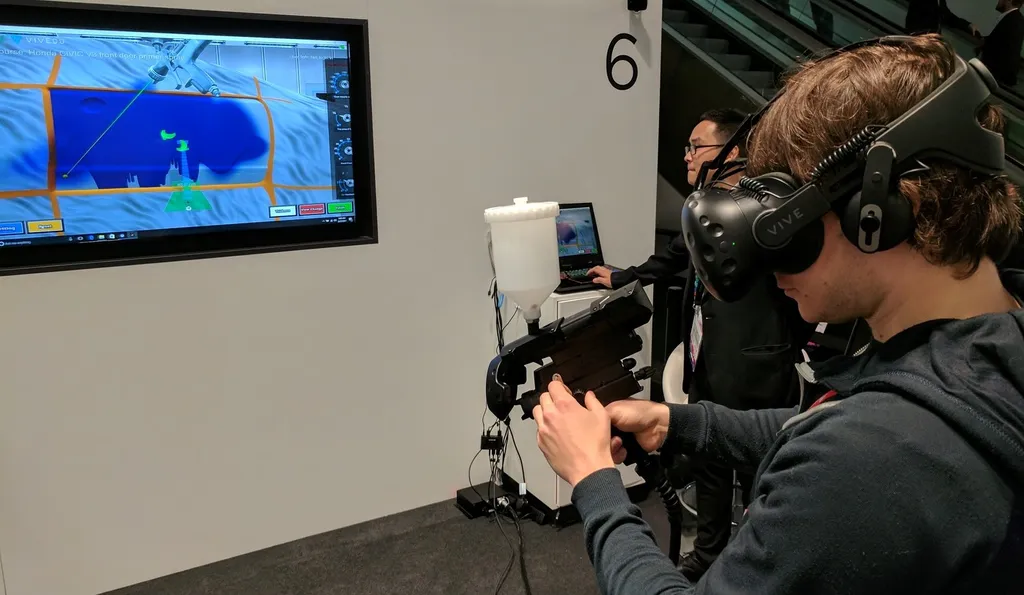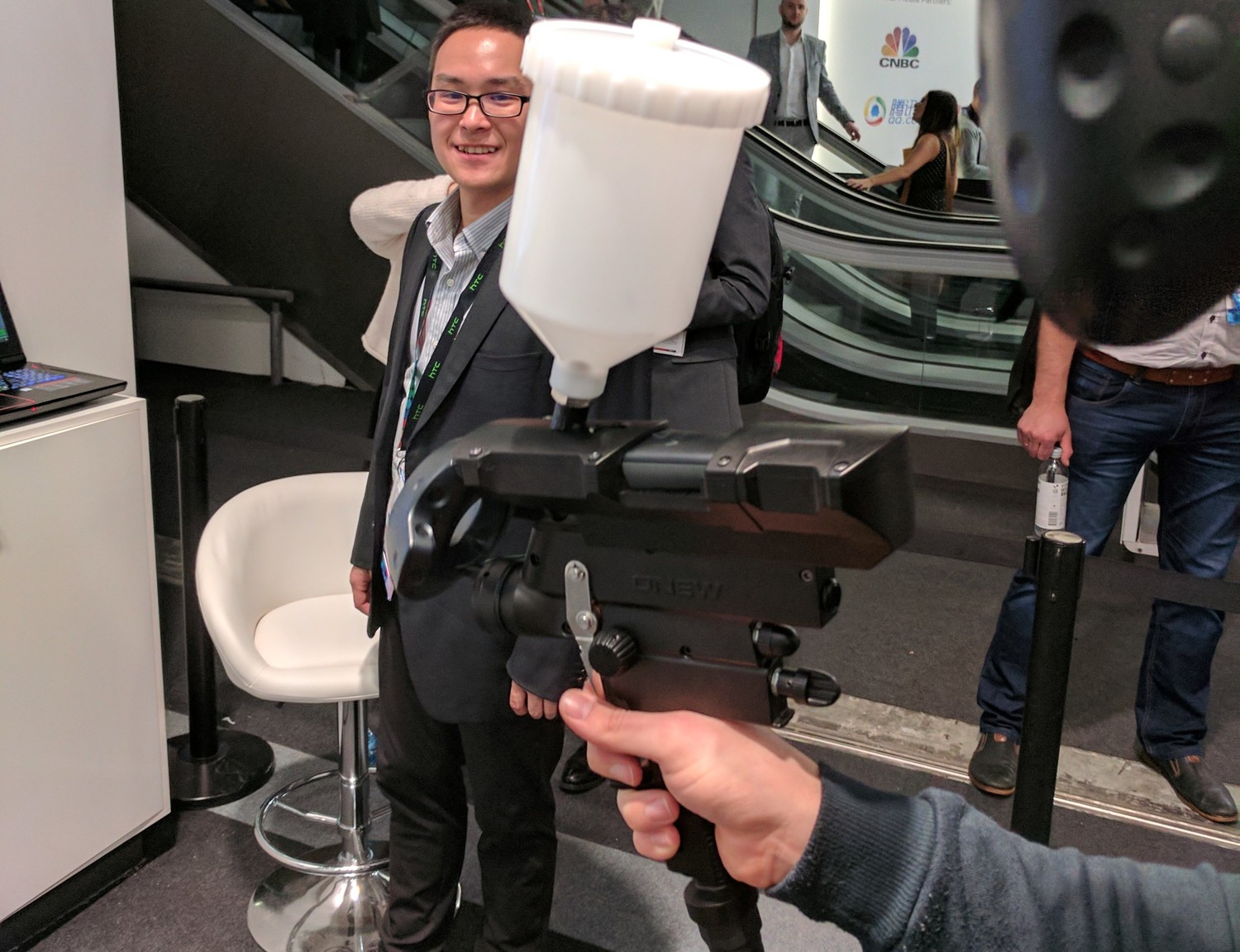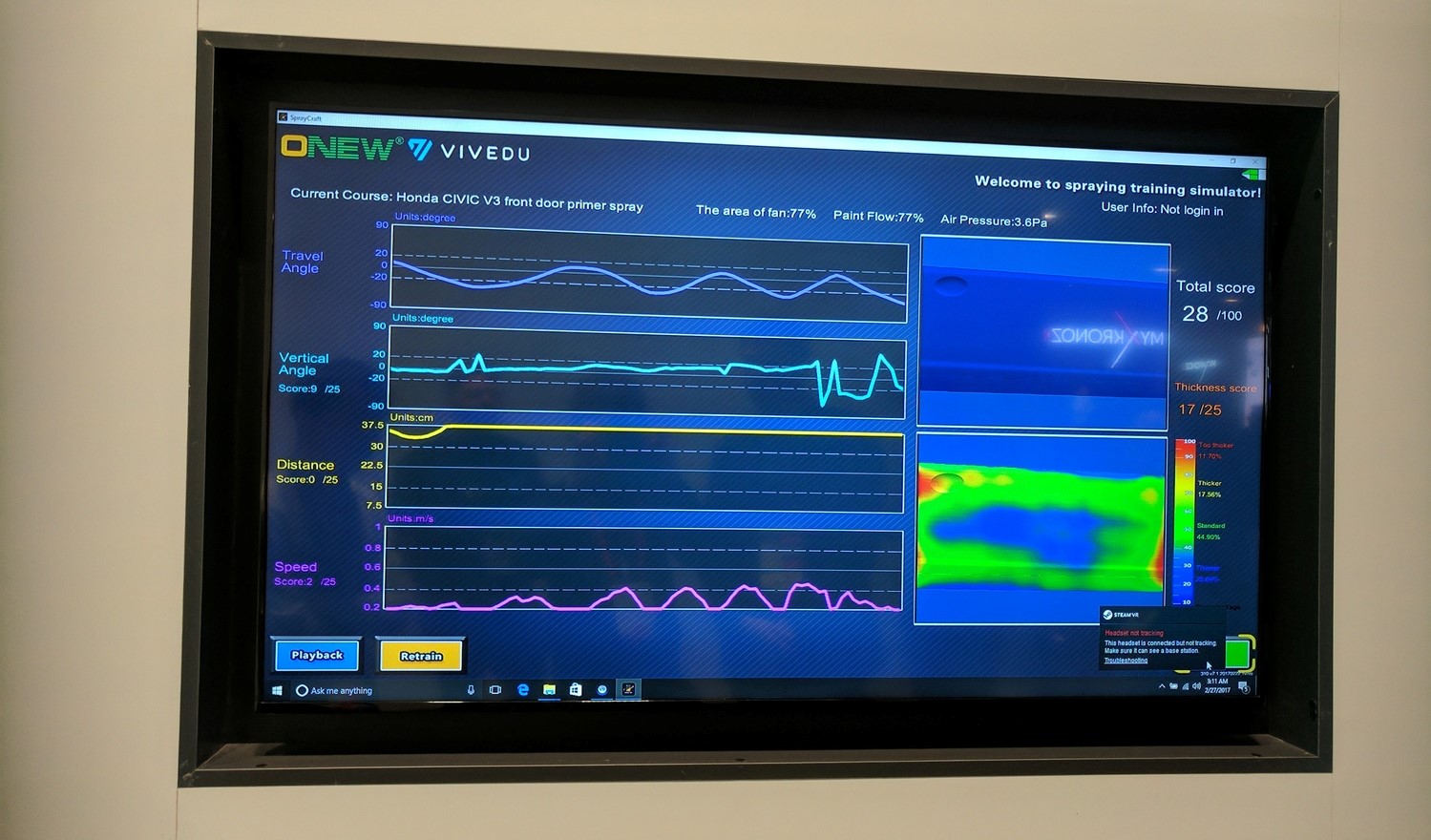Tilt Brush and Kingspray are both great for unleashing your creative side when it comes to VR painting, but they’re not much use as professional applications. That’s not a slight against them, but there’s a small market that could make genuine use of a painting app for the working world. I got a small glimpse of such an app at Mobile World Congress last week.
At its booth on the show floor, HTC showed SpraryCraft, an experience that used a peripheral shaped like a spray paint gun, with a Vive controller fitted inside. Obviously the intention is for the new Vive Tracker to be used instead of a controller one day, but for now it makes a pretty good substitute.
Inside VR, I wasn’t painting artwork or 3D models, but instead a car door, with the rest of the vehicle concealed with a wrapping, a little like it might in a real factory. No, that doesn’t exactly sound glamorous, but this wasn’t a piece of entertainment software, and it wasn’t easy to master, either.
Along with a trigger, my controller was fitted with three knobs to twist, each affecting the spray produced in VR. One would adjust the angle at which the paint was released, for example, while another changed how much paint was used when I squeezed the trigger. These were fully integrated with the VR experience, so I could see what I was turning and in which direction in the virtual world.
Its important to pay attention to those meters along with your technique, as they dictate just how good of a job you’ll do. For my first try, for example, I randomly turned the knobs and that scattered the blue paint without paying much attention to detail. I ended up have thick gloops of liquid running down the door and patchy areas in the corners. After I was ‘finished’ I could remove the Vive and take a look at a graph showing me just how bad of a job I’d done.
As you can see above, I got pretty detailed feedback. It showed me what type of car door I was practicing on (in this case a Honda Civic), the angles at which the paint was spraying, the distance I held my hand to the car, and the speed at which I was moving. Heatmapping also showed me where I applied the most paint and where I skimped a little. This is all data that could probably be captured with the real thing, but all I had to do was slip on a VR headset and paint, not practice on real car doors that might go to waste.
On my second go, I adjusted the switches according to the information I’ve been given and was treated to better results. I was still far from perfect, but I could see how the data could help me get better with each passing round.
SprayCraft might not be something I’d personally spend hours with, but that’s not the point. This is something I could see having genuine use within the automotive industry and beyond. The next time you’re sitting in a new Honda, a VR headset might have helped it get there.






























